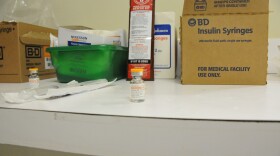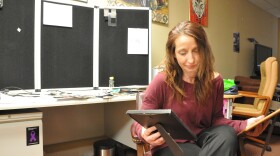This is the final of three stories in a series looking into North Carolina's opioid drug epidemic. Read the and stories.
Louise Vincent believes her daughter, Selena, would still be alive today if a harm reduction treatment method were more widely accepted.
Selena died in March of a drug overdose. She died while seeking treatment, but was in a strict program that seeks to have drug abusers abstain from all illicit drugs immediately. Vincent, and others who believe in harm reduction, say a more effective treatment method would work with drug abusers to gradually reduce drug use, or to step from hard drugs to lesser drugs like marijuana.
It’s a tactic shared by Robert Childs, executive director of the North Carolina Harm Reduction Coalition (NCHRC).
"I think we as a society are failing a lot of people. And it’s just really sad," he said. "We know, inherently, human civilizations are going to use drugs. There isn’t a modern civilization that's not using drugs. So what we want to do is, if we know that inherent truth, let’s try to make it as safe as possible to give people another day till they are ready for what’s next."

Vincent, herself a former drug abuser, preaches this kind of approach as a more viable way to helping the most people. A cold turkey approach, she said, sets people up only for failure. "You've go from using drugs all day long in your life. Every day. From it being how you cope and how you function and how you make it through the day. To using nothing. Just like that," she said. "And then we wonder why we’ve got insane relapse rates? We have no step process where people can make small goals."
There is reason to believe that harm reduction is making inroads among provider communities. Needle exchange programs are popping up in which users can receive clean needles to prevent the spread of Hepatitis C or HIV. Treatment centers like Healing Transitions run an abstinence expectation program that sets total abstinence as the ultimate goal, but also operate wet shelters and allow people to come to their facilities while still using drugs.
"We need as many tools as possible to help people," said Chris Budnick, the Healing Decisions executive director. "We see much more of a bridge built between the two (schools of treatment)."
Increasingly, recovery is being measured not by the absence of something – drugs – but by the addition of other things – employment, family connections, independent housing.
Changes are also happening at the highest levels of government. Just this summer, North Carolina issued a standing order for anyone to receive Narcan kits without a prescription. Narcan contains naloxone, a drug that will reverse the effects of an overdose in an emergency situation. Now that no prescription is needed for a Narcan kit, friends or family members of drug users can have this kits available to possibly save a life. Law enforcement have carried these kits for three years, and recently reported the 5,000th overdose reversal.
"You know, if they get naloxone, that may be the time that they then choose to make a different health behavior decision, or reduce their drug use," said Childs.
The provider community is also starting to view drug abuse through the lens of mental illness and addiction. In November, the Surgeon General released a report that identified substance use disorders as a public health problem and emphasized a need to eradicate negative attitudes associated with drug use and treatment and "change the way people think about substance use disorders" from stigmatizing drug use to encouraging early treatment.
"It's time to change how we view addiction," U.S. Surgeon General Dr. Vivek Murthy said in releasing the report. "Not as a moral failing but as a chronic illness that must be treated with skill, urgency and compassion. The way we address this crisis is a test for America."
One in seven people living in the United States will develop a substance abuse disorder, yet only 10 percent seek treatment, according to the report. Across much of the treatment spectrum, providers say it is easy to ignore this population that lives on the fringes of society.
"What we view more as the problem, is the broken infrastructure of the system, where people without adequate income can’t really access drug treatment or detox, or they are being discriminated against because of their criminal record," said Childs.










